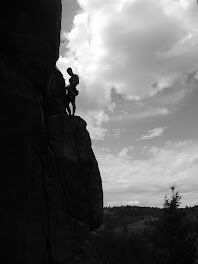5 Free Alternatives to Photoshop (With Layers)
The Internet has revolutionized our world, so much so that geographical distances have vanished, we are completely connected to every nook and corner of the world, and we have access to any kind of information if only we know where to look. Another area where the web has made our lives easier is in the procurement of free software and applications; we love the fact that we no longer have to pay for things that are nice and useful. Thanks to the concept of open source, we are now free to use some of the best software, at no cost at all. Yes, some of the best things online do come free, like alternatives to the horribly expensive and proprietary photo editing software from Adobe, Photoshop.
Most people avoid choosing the free options because they are not complete and are usually mere shadows of the software they attempt to replace. But there are a few free alternatives to Photoshop that are quite comprehensive, and I’ve listed five that come with Layers, the feature in Photoshop that has people raving because it allows you to work with and make changes to compositions easily.
· Paint.NET: Hard to believe that any software that has the tag Microsoft would be offered for free, but this one really is. Paint.NET was actually designed to be a free alternative to Microsoft’s Paint software that comes with Windows OS, but it is now an open source application that offers quite a comprehensive set of features. The UI is great, and with unlimited UNDO options and the ability to work with layers, it is a favorite option for those who don’t want to shell out a lot of money for a neat photo editing tool.
· Splashup: If a photo editing tool was a size zero, it has to be Splashup. Formerly known as Fauxto, this application allows you to easily edit images from Facebook, Flickr and Picassa, and although it’s not feature rich, it has most of the abilities that you use most often. This makes it a light tool, one that is fast and does not take up too much space. You can also work with multiple images and layer simultaneously.
· GIMP: Although this free application lacks adjustment layers, it cannot be left out of any list that contains viable and good alternatives to Photoshop. GIMP is almost Photoshop, except for a few minor features. And best of all, it’s completely free, a fact which makes up for the few shortcomings it has. Although GIMP is good enough and is being constantly improved upon by a large community, if you want to try something that was developed much later (GIMP is the oldest alternative to Photoshop), you could try GIMPshop which is also similar to Photoshop and free.
· Phoenix: A Rich Internet Application (RIA) that allows you to work on your images from within a browser, Phoenix looks and feels just like a desktop application. While it’s close enough to Photoshop to satisfy diehard fans of Adobe’s software, the real delight in using Phoenix is that it is a collaborative application that facilitates group work. Users can be in different countries and scattered across the globe, yet they’re able to work on the same project, thanks to Phoenix.
· FotoFlexer: It’s advertised as the “world’s most advanced online image editor”, and while that statement may have to be taken with a grain of salt, it’s true that FotoFlexr is a great photo editing tool. It links seamlessly with Facebook, Flickr, MySpace and Picassa and also allows integration of its API into your website. This is also an online tool like Phoenix in that it must be used from within a browser when you’re connected to the Internet.
By-line:
This article is written by Kathy Wilson, who writes on the subject of Photography College . She can be reached at her email id: kathywilson1983@gmail.com .


